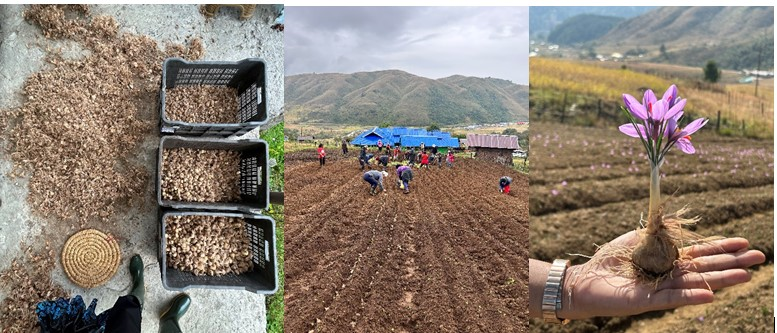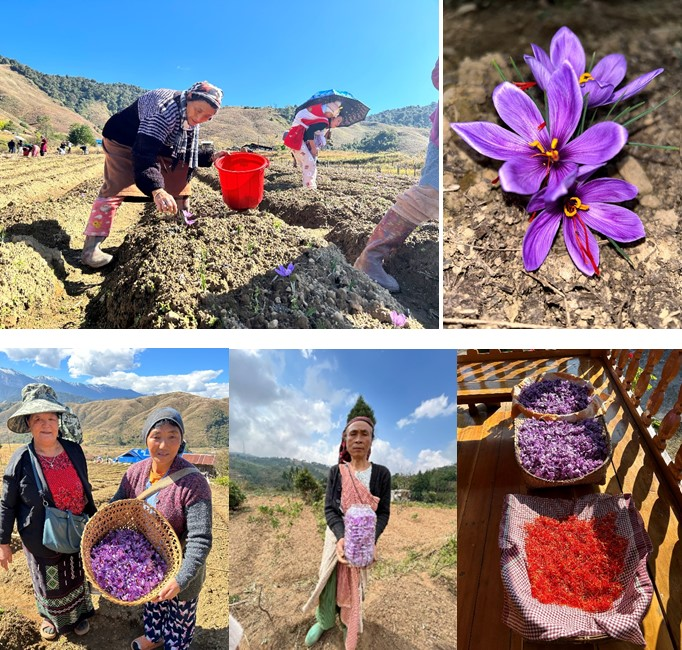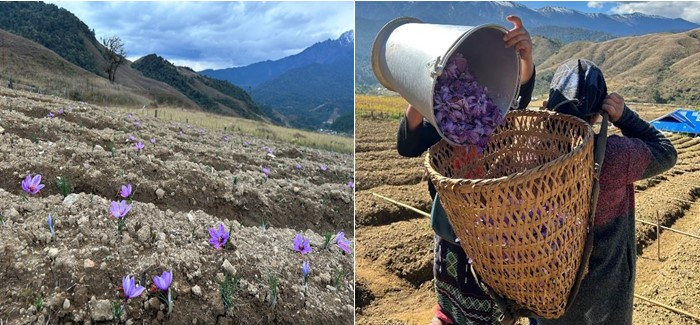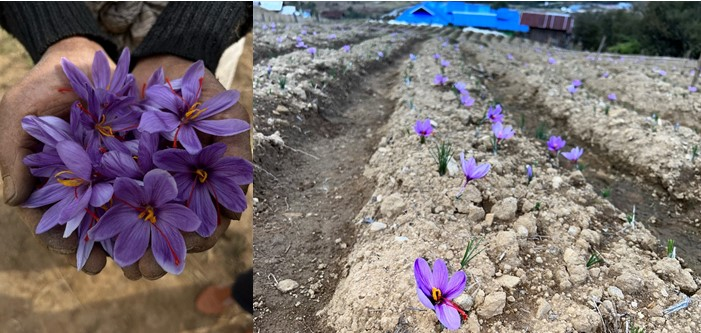Purple flowers of saffron plant are now blooming in Arunachal Pradesh, Meghalaya, Mizoram, and Sikkim – thanks to identification of suitable sites with the geographical and climatic parameters of Pampore region of Kashmir as standard reference for the plant using Geospatial techniques.
Saffron which is acclaimed to be the most expensive spice in the world, is a rich source of several bioactive compounds such as crocin, picrocrocin and safranal which renders several therapeutic properties like anti-convulsive, anti-cancer, anti-diabetic, anti-depressant, anti- psoriasis, anti-seizure, anti-nociceptive, anti-inflammatory, anti-genotoxic and hypolipidemic. It is also widely used in the textile and cosmetic industry. For the past few years, there has been an increasing demand for this spice while the production is not enough to meet the daily demands.

To fill the gap both at domestic and international markets, efforts are being made to explore alternate strategies for upscaling saffron production. To increase the productivity of saffron spice Northeast Centre for Technology Application and Reach (NECTAR), an autonomous organisation under the Department of Science and Technology (DST). NECTAR carried out pilot cultivation during 2021-22. A total of 15 cultivation sites were identified in four NER states --. Arunachal Pradesh, Meghalaya, Mizoram, and Sikkim following individual land surveys meticulously assessing the related parameters specific to saffron cultivation and comprehensive studies of the potential sites conducted by cross- referencing through desktop studies and Geospatial techniques with the geographical and climatic parameters of Pampore region of Kashmir as standard reference.
The pilot cultivation was carried out in collaboration with state govt. departments under one umbrella to execute “Mission saffron”. Complete assessment using the basic requirement of science & technology, related to flowering yield, corm survival rate, multiplication of daughter corms and soil profiling was carried out by NECTAR in respective sites. The cultivation sites were then categorized under three categories ---high potential sites that showed flowering accompanied by greater than 50% corm survival rate and multiplication rate of daughter corms; medium potential sites that showed flowering, corm survival and multiplication rate between 10-20% and low potential sites for sites showing low flowering rate with no multiplication of daughter corms.

Positive results from the pilot cultivation in terms of flowering, corm survival rate and multiplication of daughter corms paved a way to carry forward the project on a larger scale for the year 2023-24. Currently, large scale cultivation is ongoing in two locations which are Menchukha in Arunachal Pradesh and Yuksom in Sikkim with approximately 10 quintals of saffron corms in both the site and continuation of pilot cultivation in medium potential sites to further validate site suitability. An awareness cum farmers mobilization program was conducted by NECTAR and importance of saffron and its package of practices were explained to the farmers.
A total of 64 farmers (22 in Sikkim, 37 in Arunachal Pradesh and 5 in Meghalaya) are now reaping the benefits from NECTAR’s saffron cultivation project. The cultivation steps have been modified as per the prevailing climatic condition and soil type of different cultivation sites. Saffron corms were sown between last week of September and first week of October. Soon after, flowers started blooming in all the fields. As of the first week of November, approximately around 37000 plus flowers were seen blooming. As saffron flowers spread at least 200 grams of dried saffron is expected from the region this season.

The Saffron cultivation project along with partners like Arunachal State Rural Livelihood Mission and Directorate of Horticulture, Govt. of Arunachal Pradesh; Bethany Society, Wellspring Social Service Society, Krishi Vigyan Kendra East Khasi Hills, Meghalaya Basin Development Authority, and Experimental Research Station Upper Shillong, Directorate of Horticulture, Govt. of Meghalaya; Department of Science & Technology, Mizoram; Sikkim state council of Science and Technology, Social Forestry, Gangtok and Mangan Division, Govt. of Sikkim, could bring opportunity for the NER farmers in terms of prospecting livelihood generation.
NECTAR is working on bringing more area and farmers under saffron cultivation following comprehensive physico-chemical and microbial assessment of the soil to understand the suitability of the soil for saffron cultivation and to bring a new NE brand of Saffron in the market. It is also exploring possible opportunities to accommodate R & D aspects of Saffron and related byproduct(s).































